iRobot Roomba s9+ vs. iRobot Roomba i7+: Which should you buy?
We’ve tested both the Roomba s9+ and the i7+, so we know the fundamental differences
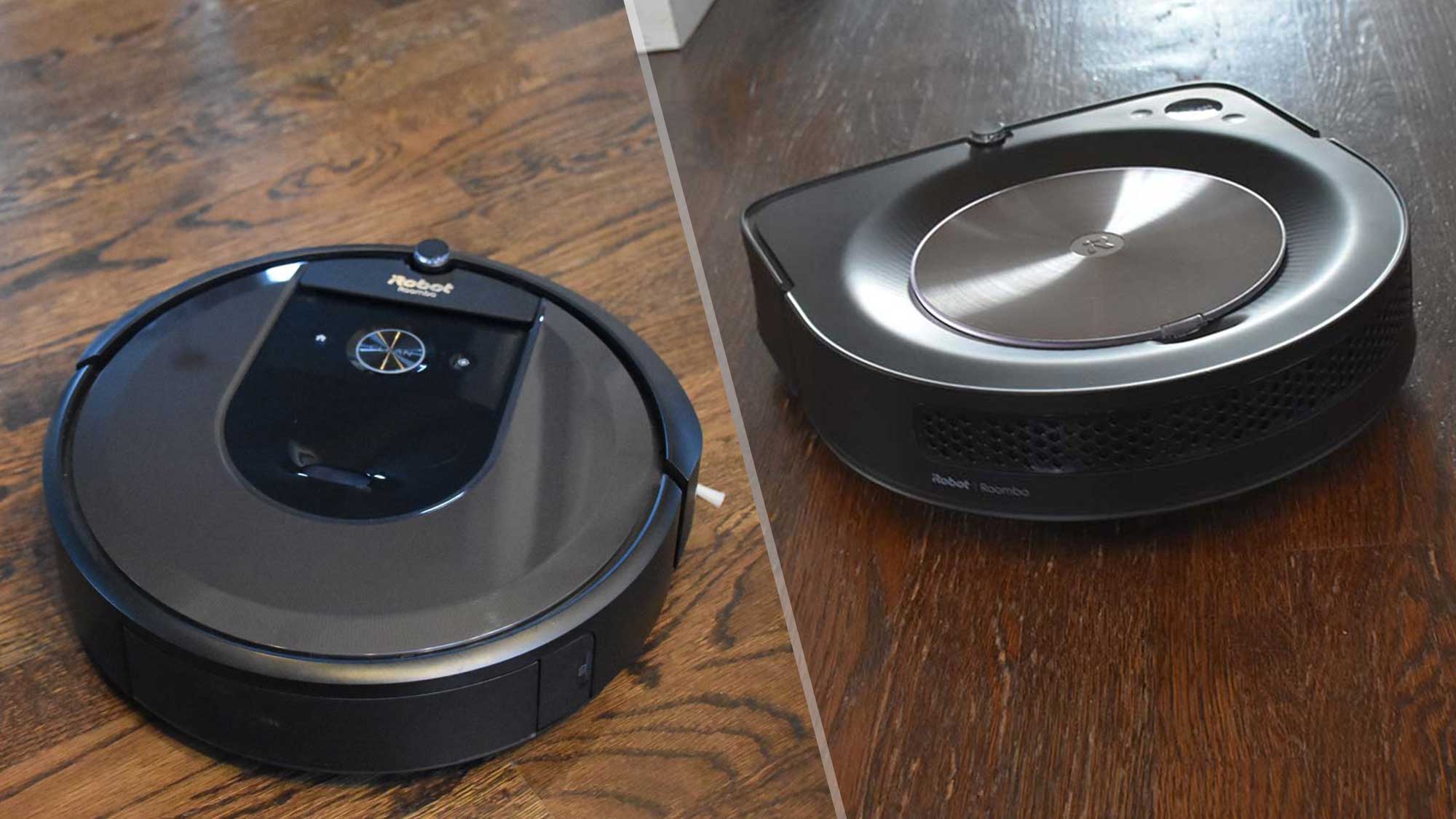
iRobot provides some of the best robot vacuums, offering everything from entry level models all the way to the most premium of designs, self-emptying bases and object recognition included. And while there’s a substantial difference in price, it can sometimes be difficult to tell what sets each model apart — especially when similar functions are on offer.
Of the best Roombas out there, two such models which consumers often struggle to differentiate between are the Roomba s9+ and the i7+. There’s minimal difference between the appearance of these two models — other than one using a D-shaped robot body, and the other featuring a circular design. The self-emptying bases appear almost identical and you use the same app in both circumstances. And yet, there’s a $200 price difference to reflect the upgrades to the s9+. But, is it worth this extra investment?
To help you decide, we put both models to the test, assessing everything from the pick up rate, to the effectiveness on hard floors and carpet alike. We set up each robot vacuum at home, exactly as you would, and found every strength and weakness behind the design. Read on to see a breakdown of the core differences between these models, so you can decide for yourself which would better suit your home.
Roomba s9+ vs. Roomba i7+: Specs
| Specs | Roomba i7+ | Roomba s9+ |
| Price with Clean Base | $599 | $799 |
| Size | 13.3 x 3.7 inches | 12.3 x 3.5 inches |
| Weight | 7.4 pounds | 8.2 pounds |
| Mapping | Yes, up to 10 floors | Yes, up to 10 floors |
| Smart Home | Alexa, Google Assistant | Alexa, Google Assistant |
| Dog Hair Average Score | 90.5 | 98 |
| Kitty Litter Average Score | 87.6 | 100 |
Roomba s9+ vs. Roomba i7+: Price and availability
The Roomba s9+ is a more recent model compared to the i7+, and consequently only the s9+ is available on iRobot’s website directly. The s9+ has an MSRP of $999, but it’s often reduced down to $799. It’s widely available from retailers such as Best Buy, Amazon and Home Depot. You can also purchase the s9+ as a bundle with the Braava Jet M6 robot mop for $999, but the robot vacuum isn’t available separately from the base.
Being an older model, the Roomba i7+ is more limited in availability. It has an MSRP of $599, and can be found on retailers such as Amazon, Best Buy and Walmart. You can purchase the robot vacuum separately from the base though, at a cost of $440 on Amazon.
Both self-emptying bases fit the same Dirt Disposal Bags, which are priced at $16 for a pack of three on Amazon.
Roomba s9+ vs. Roomba i7+: Design
Face-to-face, the s9+ looks more premium with a D-shaped body and a bronze disk on top. By comparison, the i7+ appears more traditional, featuring a rounded design in a black and gray colorway. The alternative shape is one of the primary differences between the two models. The D-shape of the s9+ is the first of its kind from iRobot, and utilizes ‘PerfectEdge Technology’. The idea being that the robot vacuum can better reach into corners and edges. The i7+, along with other round robot vacuums, won't be so thorough as they lack the necessary edges.
Sign up to get the BEST of Tom's Guide direct to your inbox.
Get instant access to breaking news, the hottest reviews, great deals and helpful tips.
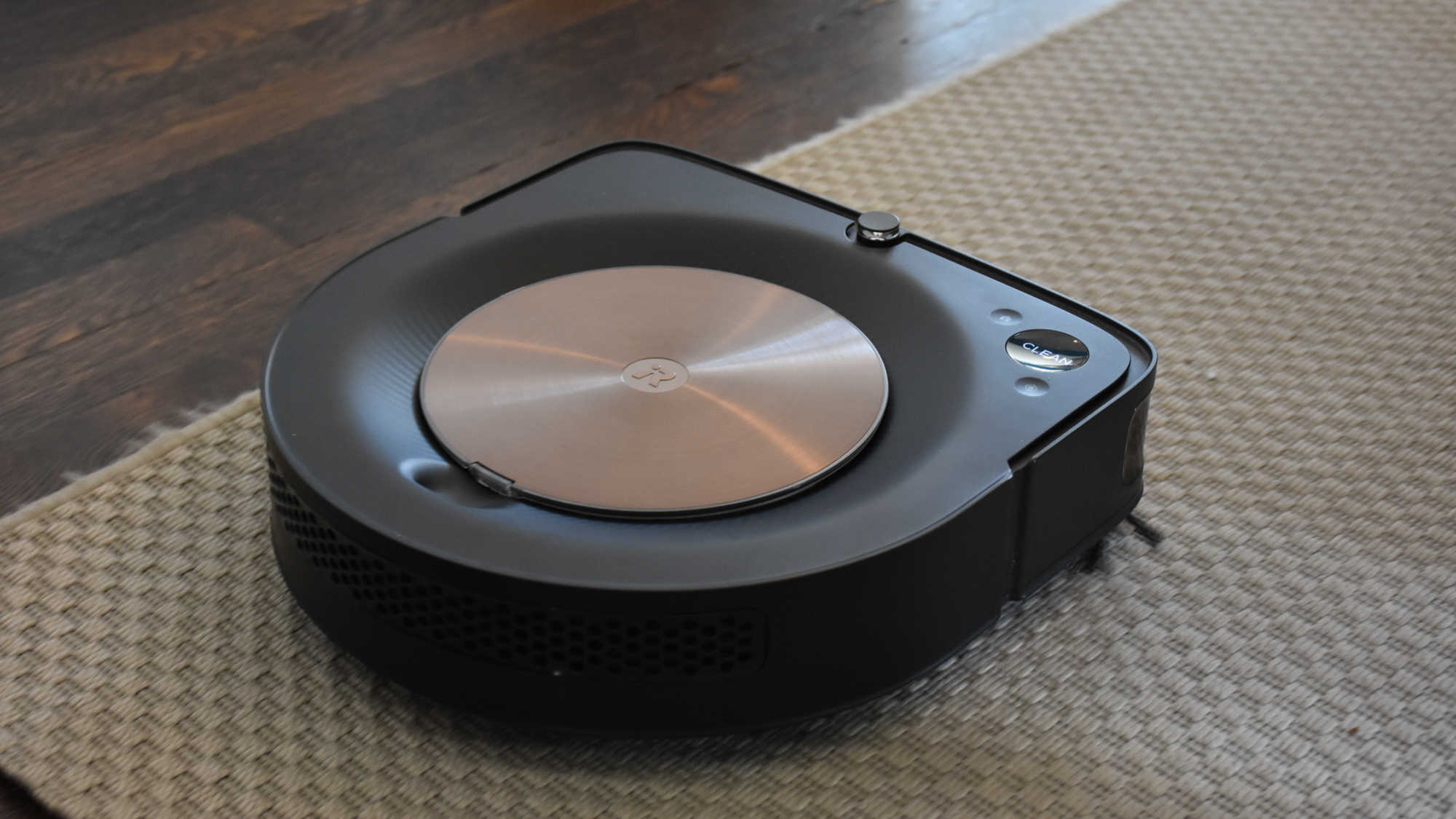
In terms of build, the s9+ measures 12.3 in x 3.5 inches, while the i7+ measures 13.3 x 3.7 inches. So you’re getting a slightly bulkier design with the i7+, making it the less ideal option for reaching into small spaces and clearing under furniture. Despite this, the s9+ weighs more — at 8.2 pounds compared to 7.4 pounds; the difference is minimal, but it is surprising considering the smaller build of the s9+. This gives the s9+ a slightly more solid feel, but on the whole there’s not much in it.
Comparing dustbins, the s9+ can hold 388 ml, while the i7+ can take 500 ml on-board. You might assume that this is irrelevant due to the self-emptying bases, however it does make a difference in terms of how often those bases will have to self-empty, saving on time as well as noise. It’s also worth flagging that if you buy the i7+ without the base, you will get a slightly larger dustbin, so you will have to empty it less often. In any case, the i7+ wins this round.
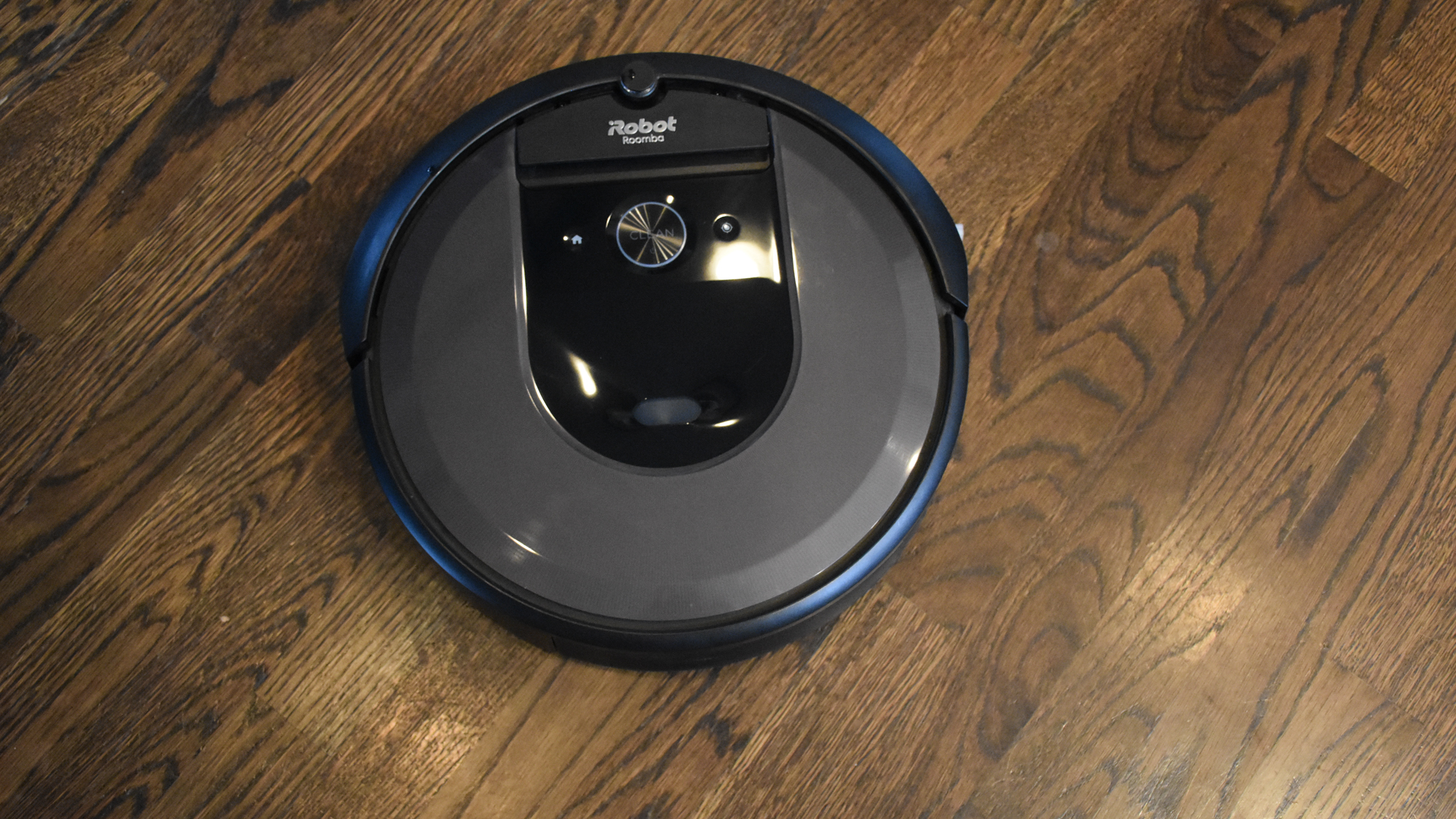
There’s little difference looking at the design on the underside of the vacuums, other than the S9+’s rollers being slightly longer, along with two additional stokes on the rotating side brush. Each device features two long green rubber rollers, which pushes dirt into the center of the vacuum for collection as well as a small rotating side brush which helps collect residual dust.
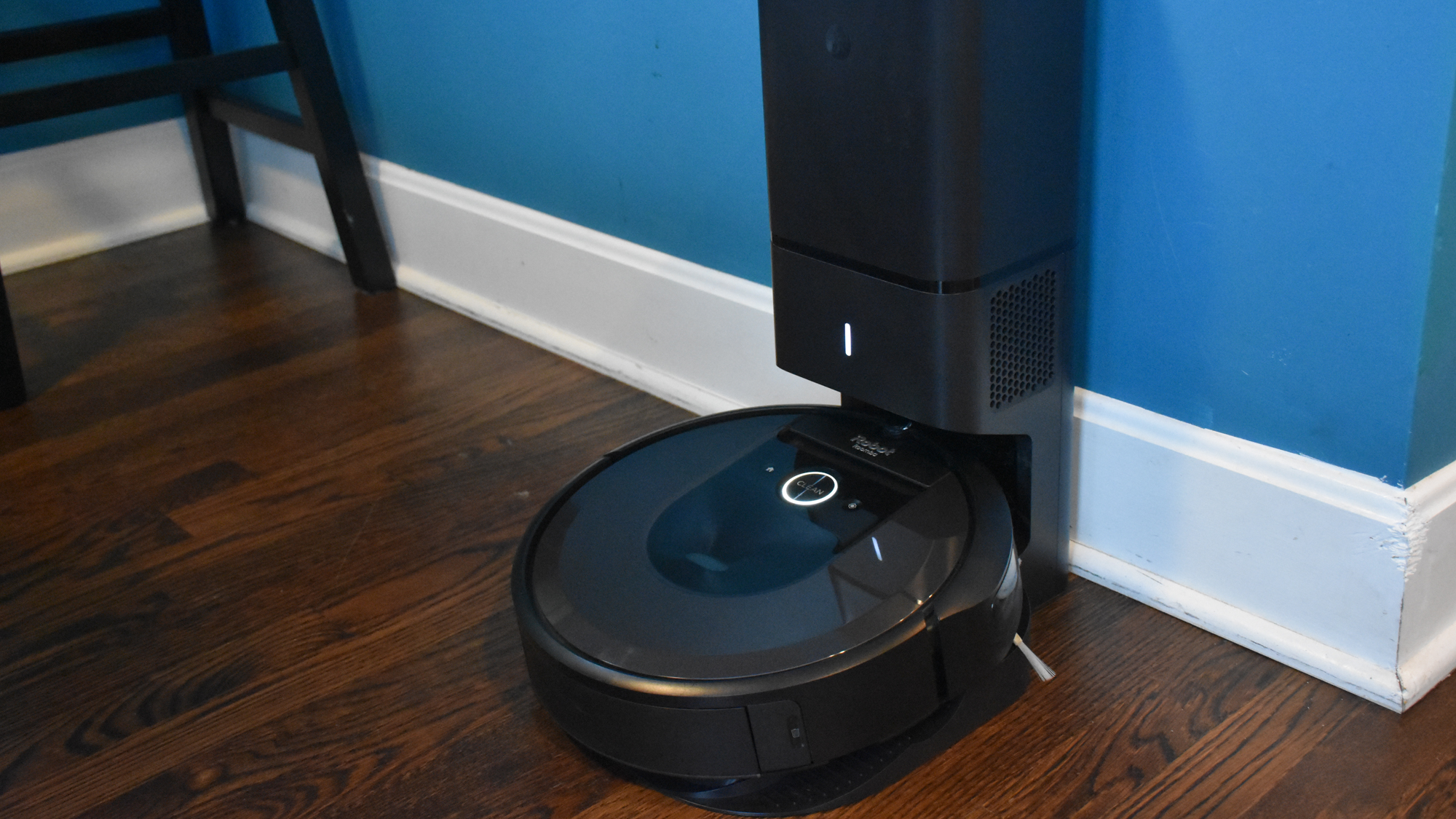
While the control panel has a slightly alternative layout on each robot vacuum, the settings and functionality here are the same.The largest button shows ‘Clean’ while the smaller alternatives show a home icon, to return to base, and a target icon, should spot cleaning be necessary. These controls are touch sensitive for both models, plus each offers LED lights to show the status of the vacuum, whether it’s cleaning, charging or there’s a problem.
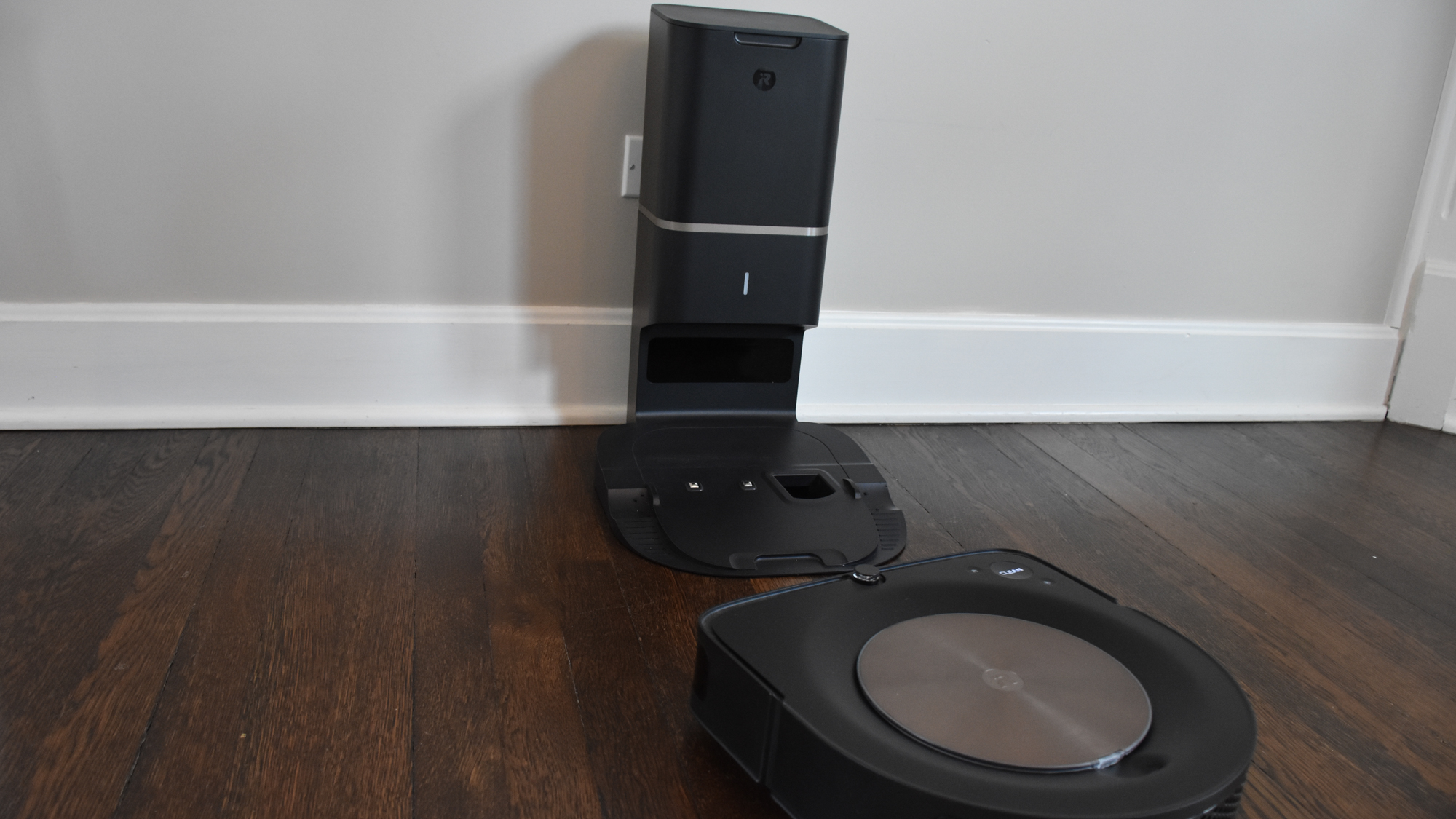
Though the self-emptying Clean Base dock for the two vacuums look nearly identical, they are different. The Roomba i7+ Clean Base has a black accent line around its tower and has a slightly larger 12.2-inch footprint. On the Roomba s9+ Clean Base, the accent line is bronze with a 11.49-inch footprint. iRobot moved the evacuation port to the center of the base on the S Series, which gives the whole base a sleeker and less clunky look.
Roomba s9+ vs. Roomba i7+: Cleaning performance
Features, high-end looks, and a fancy app are great, but cleaning performance is where the brushes meet the floor. According to iRobot, the s9+ has about 30 percent more suction power than the i7+, as well as an anti-allergen system.
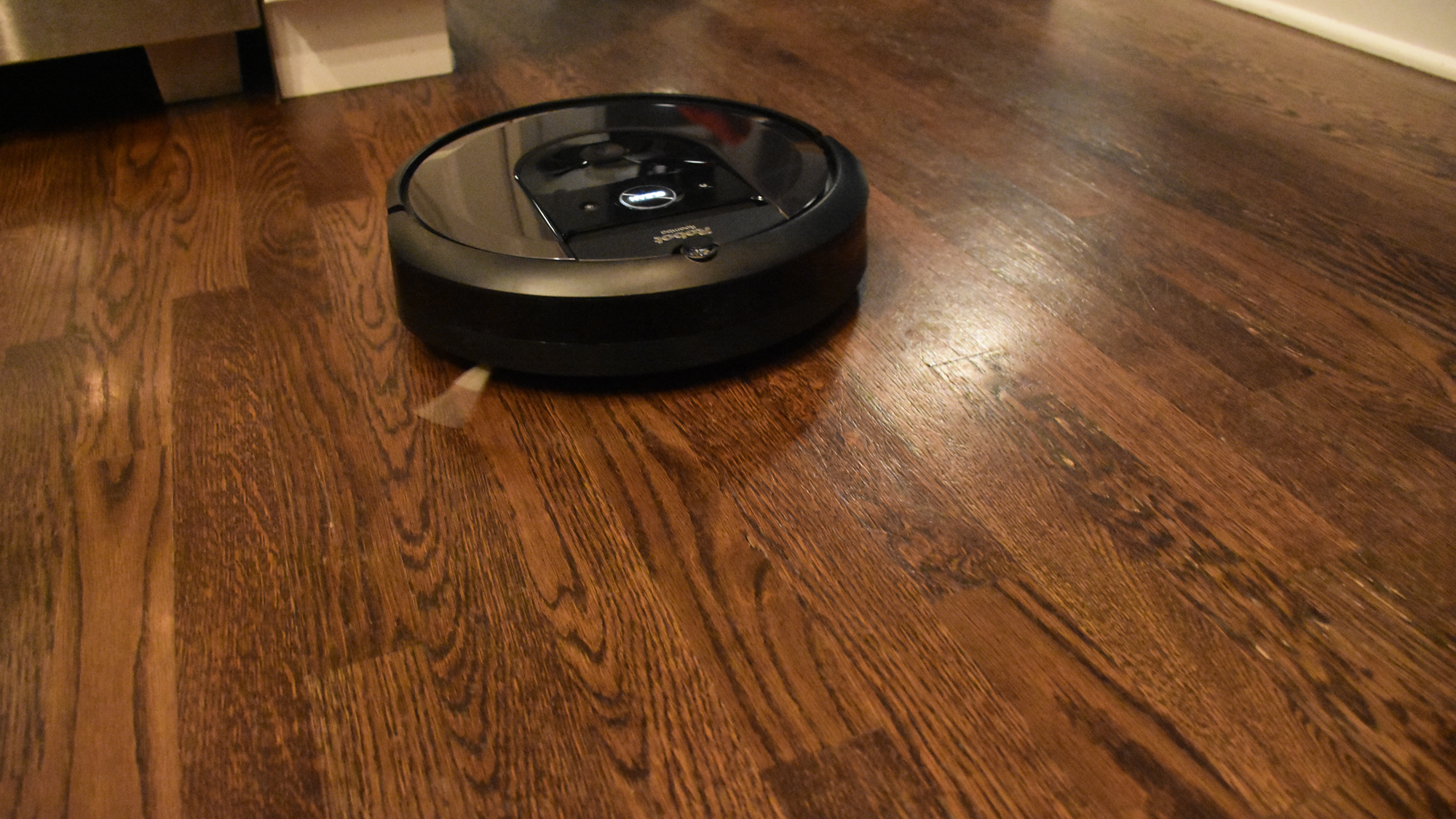
The Roomba i7+ and Roomba s9+ earned impressive marks in our lab tests, but on the tests most important to pet lovers — pet hair and kitty litter — the Roomba i7+ stumbled a bit.
On hardwood and carpet, the Roomba i7 picked up an average of 90.5% of dog hair. The Roomba s9+ collected, on average, a far more impressive 98% of dog hair. However, not all of the fur went directly into the s9+’s bin. We noticed hair caught around the rubber rollers and on one of the wheels. The i7 had similar issues, as do most robot vacuums when tackling long dog hair.
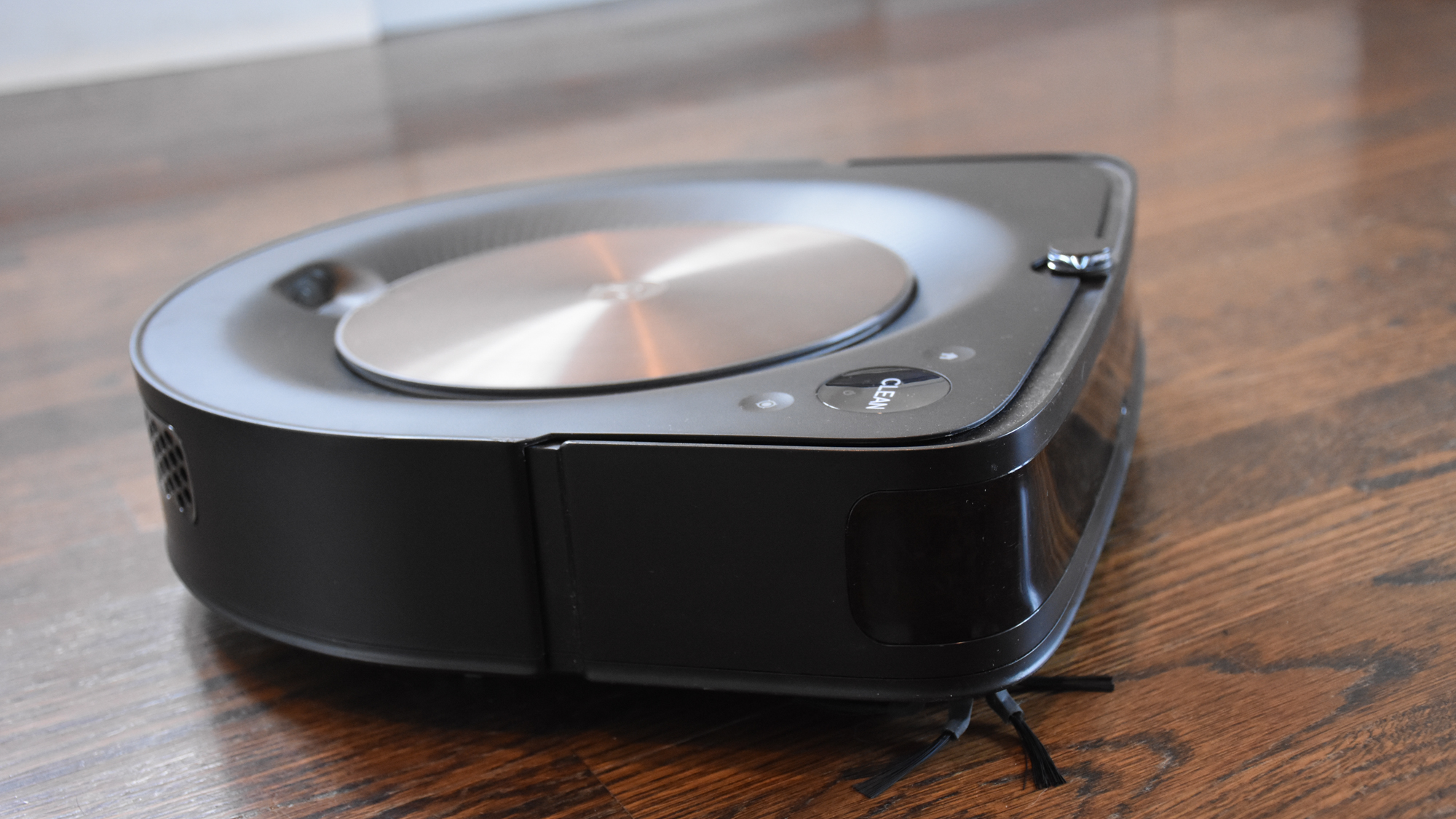
One thing to note: We weren’t able to test the s9+ and the i7+ in the same space, but we tried to replicate the conditions as closely as possible. The i7+ was tested in a 15 x 15-foot space, whereas the s9+ was tested in a 5 x 5-foot area. We used similar, but not identical, low-pile carpet.
The Roomba s9+ excelled on kitty litter in our lab test, picking up 100% of the granules on hardwood and carpet. Cat litter proved to be the Roomba i7’s weak point as it cleaned up 87.9% on hardwood and 87.3% on carpet. Presumably you’re not cleaning up after the king of the jungle, but if the king of your couch tracks litter all over the house, the Roomba s9+ will pick it right up.
In terms of residual crumbs, we also tested each robot vacuum on Cheerios. We found that the s9+ picked up an average of 92.5%, while the i7+ collected 93.1%, so there wasn't a huge difference here, although the i7+ just edged out on top.
Cleaning Performance
| Name | Cheerios | Kitty Litter | Dog Hair | Overall |
|---|---|---|---|---|
| Roomba s9+ | 92.5 | 100 | 98 | 96.8 |
| Roomba i7+ | 93.1 | 87.6 | 90.5 | 90.4 |
Roomba s9+ vs. Roomba i7+: Features and app
How’s this for a cool trick? When either the Roomba s9+ or the Roomba i7+ is done vacuuming, the iRobot Braava jet m6 mopping robot will start mopping your floors. iRobot calls it “Imprint Link Technology,” but we think it's a handy way to give your floors the finishing touches.

The S9+ stands out for detecting particularly dirty spots on the floor and focuses its cleaning on that area with extra suction and gusto. The long arms of the spoked-brush on the Roomba i7+ help guide debris into the vacuum, but the bot doesn’t offer dirt detection.
Both Roombas map each of your floors with impressive accuracy. From there, set up schemes to clean rooms in a specific order or to clean just one or two rooms at a time.
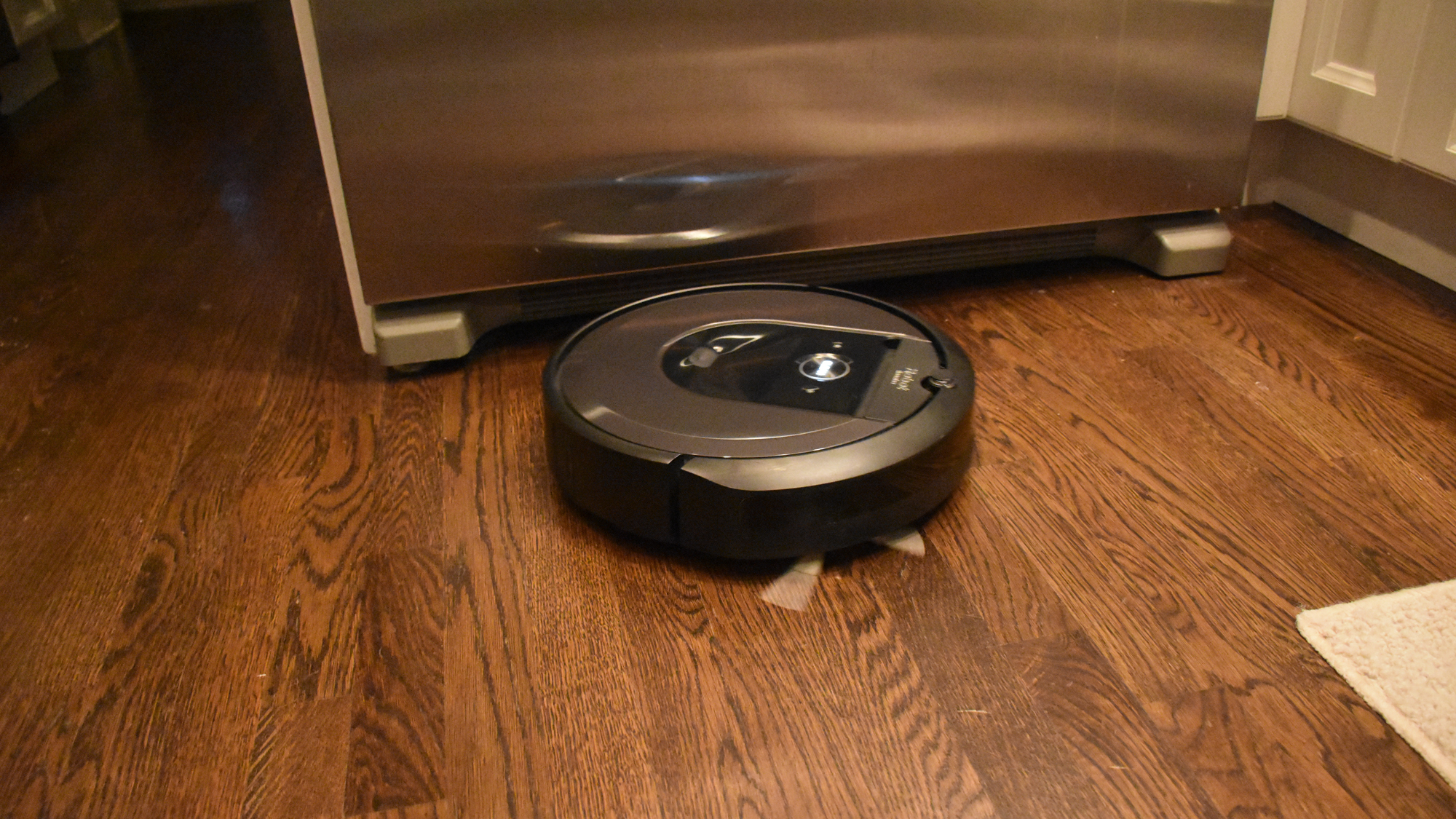
With the iRobot Home app (Android and iOS) you can create custom cleaning programs to vacuum specific areas at the touch of a button or whenever you schedule it. In addition to “Keep Out Zones,” you can create “Clean Zones” for tidying up areas that get the most traffic. So, for example, you can program them to clean under the dining room table after each meal.
Even better, you can trigger vacuuming to start when you leave home based on integration from other automated smart home devices, such as the August smart lock, the Ecobee smart thermostat, the MyQ smart garage door opener, or via IFTTT.
Roomba s9+ vs. Roomba i7+: Maintenance
On both vacuums, long hair easily gets wound around the brushes and their spokes. Thankfully, the brush rolls are easy to remove for cleaning. Flip the bot over, pop the brush release, and start pulling. The rubber brush rolls release hair pretty easily, but you may want a pair of scissors for stubborn jams. We noticed that a lot of hair tends to get wrapped around the partially hollow end of the rolls, but it was easy enough to remove with our finger.
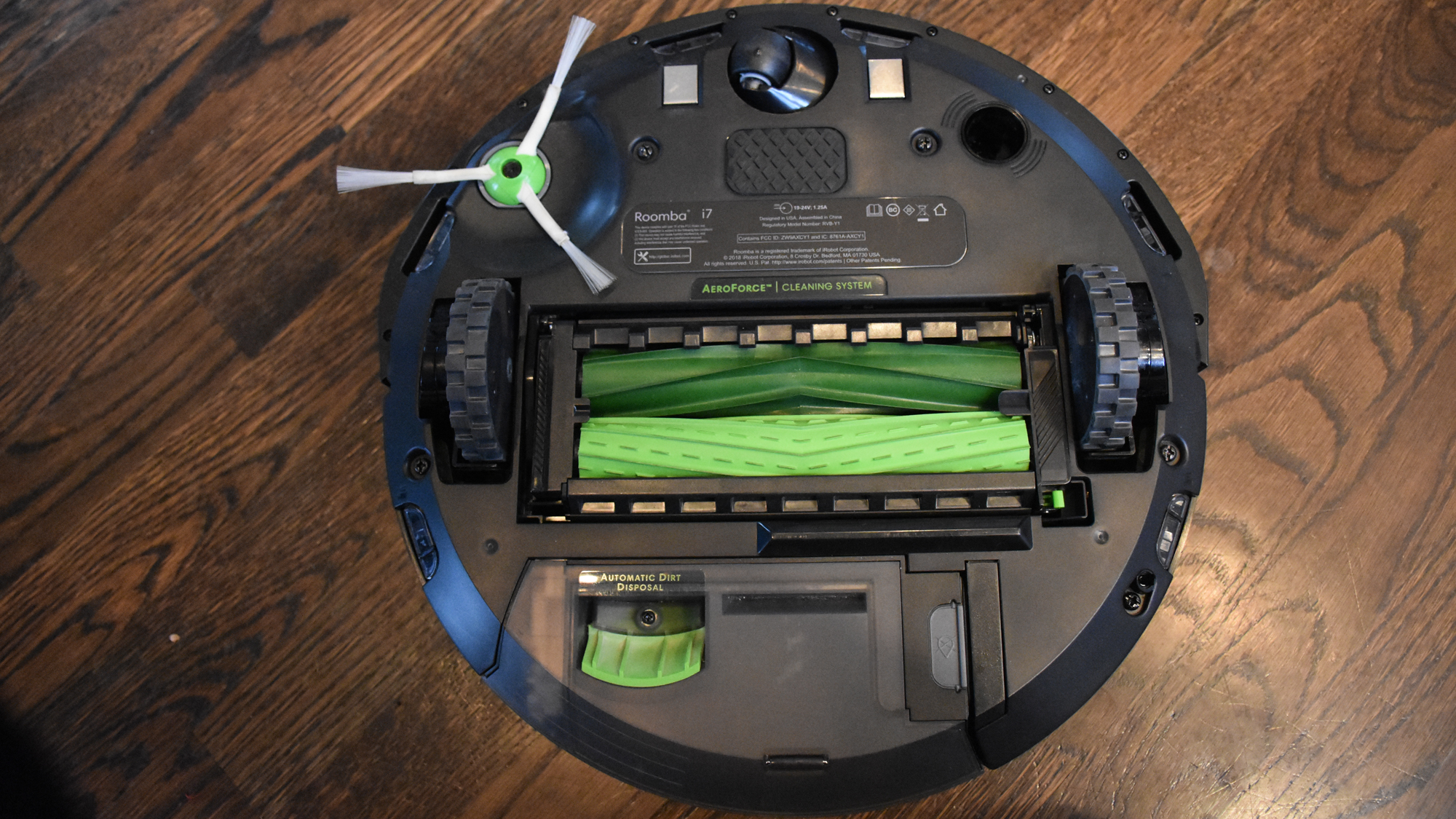
The long three-spoke brush on the Roomba i7+ ended up with a fair amount of hair wrapped around it, too. The Roomba s9+ has an almost comically small five-spoke brush near its rollers that caught some dog hair, but much less than the spoke brush on the i7+.
Even with the Clean Base, it doesn’t hurt to clean out the onboard dustbin on your Roomba. The dustbin on the Roomba i7+ sits at the rear of the bot. Release the bin by pressing a button, then pop open the door on the bin to clear any residual debris. The dustbin onboard the Roomba s9+ is easier to reach and less messy to clean out. It’s located in the center of the vacuum and easily lifts out with a handle. Press the button hidden under the handle to release the door and the bottom of the bin pops open. It's a little more elegant and we found that we got fewer dust particles on our hands. Both bins are washable in water after the filter’s removed.
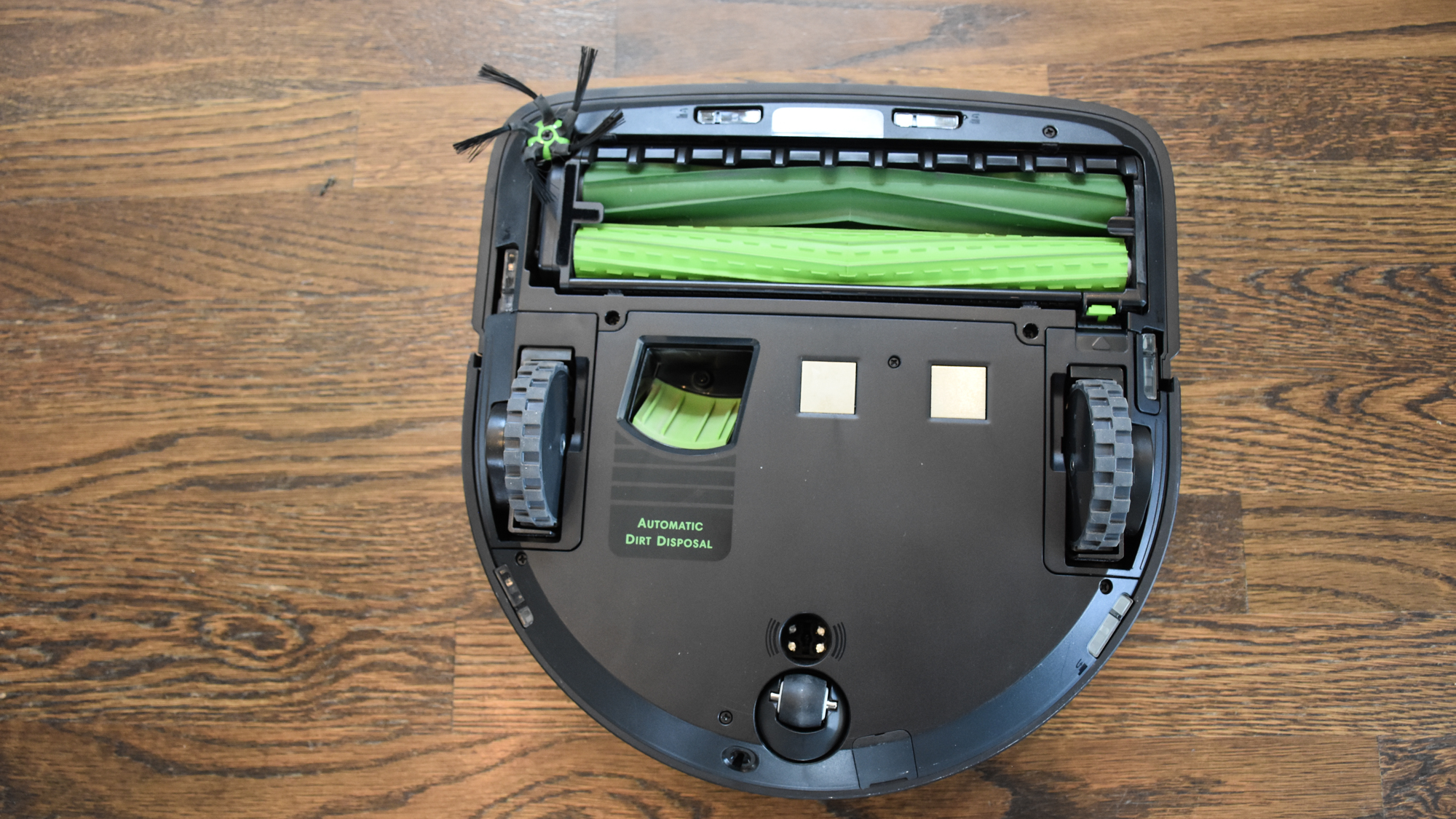
Though designed slightly differently, each Roomba’s Clean Base will stop the residual dust from flying. Both bases sound like they’re readying for takeoff when they suck the debris out of the vacuum, but it’s thorough and keeps dust and dander contained. Both bases use cube-shaped disposable vacuum bags that trap debris inside like an old-school vacuum bag. iRobot says the bags are good for approximately 30 bins of dirt or roughly a month of cleanings.
Roomba s9+ vs. Roomba i7+: Which is best for you?
Ultimately, you will get similar features from both robot vacuums along with the same app experience. However, the overall performance is stronger from the s9+ — that’s why it costs a little more. It picked up more kitty litter as well as pet hair on our tests, and generally captured more debris with ease, with the exception of Cheerios. The dirt detection technology was particularly effective as well, picking up power where additional dirt was sensed.
The Roomba i7+ is by no means a poor choice though. It still offers an impressive performance, particularly on crumbs, and will surpass many alternative options. If you’re shopping on a budget, it’s a strong contender. But, if you can afford the s9+, it is the better choice of the two. It gives you a more powerful robot vacuum on the whole, which will naturally result in cleaner floors.

Katie Mortram used to be a Homes Editor for Tom's Guide, where she oversaw everything from kitchen appliances to gardening tools, as well as smart home tech. Specializing in providing expert advice for cleaning and home manintenance, she now works as Household Advice Editor for Good Housekeeping.
